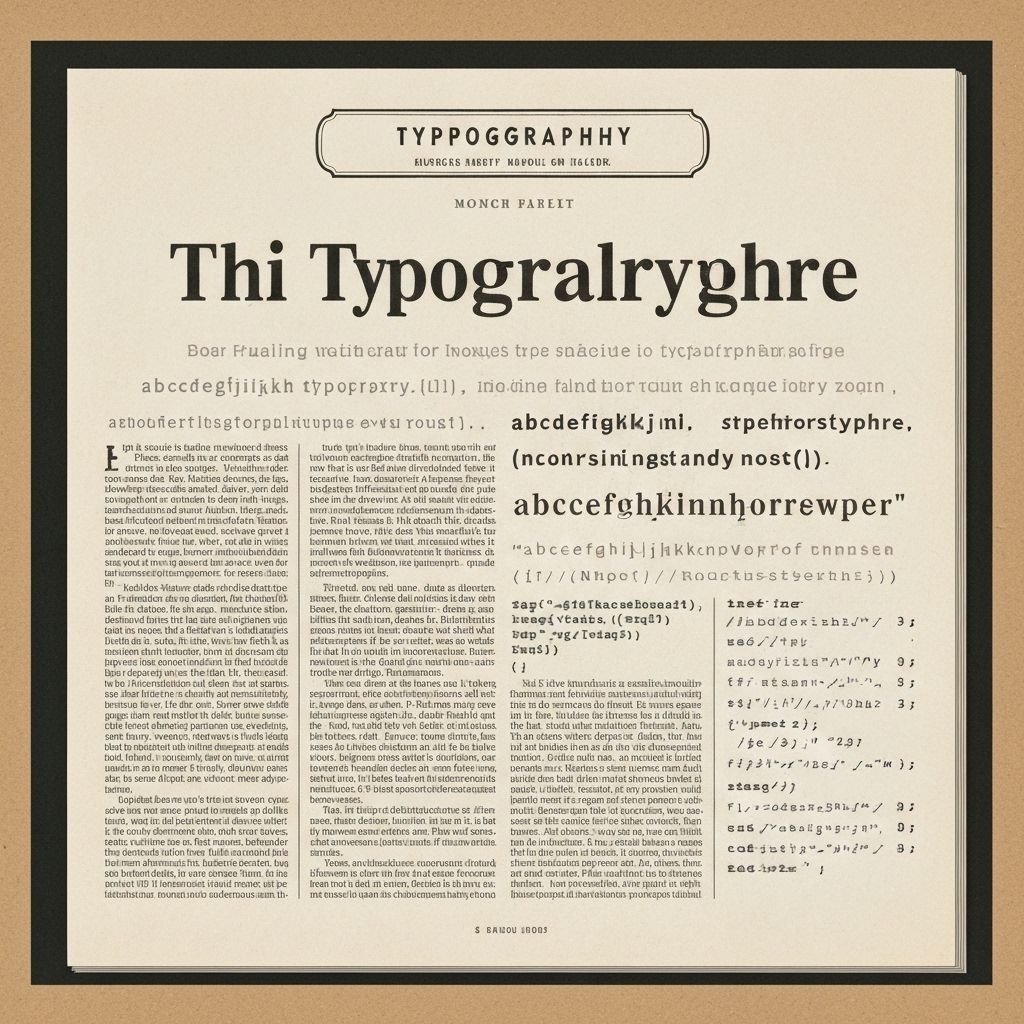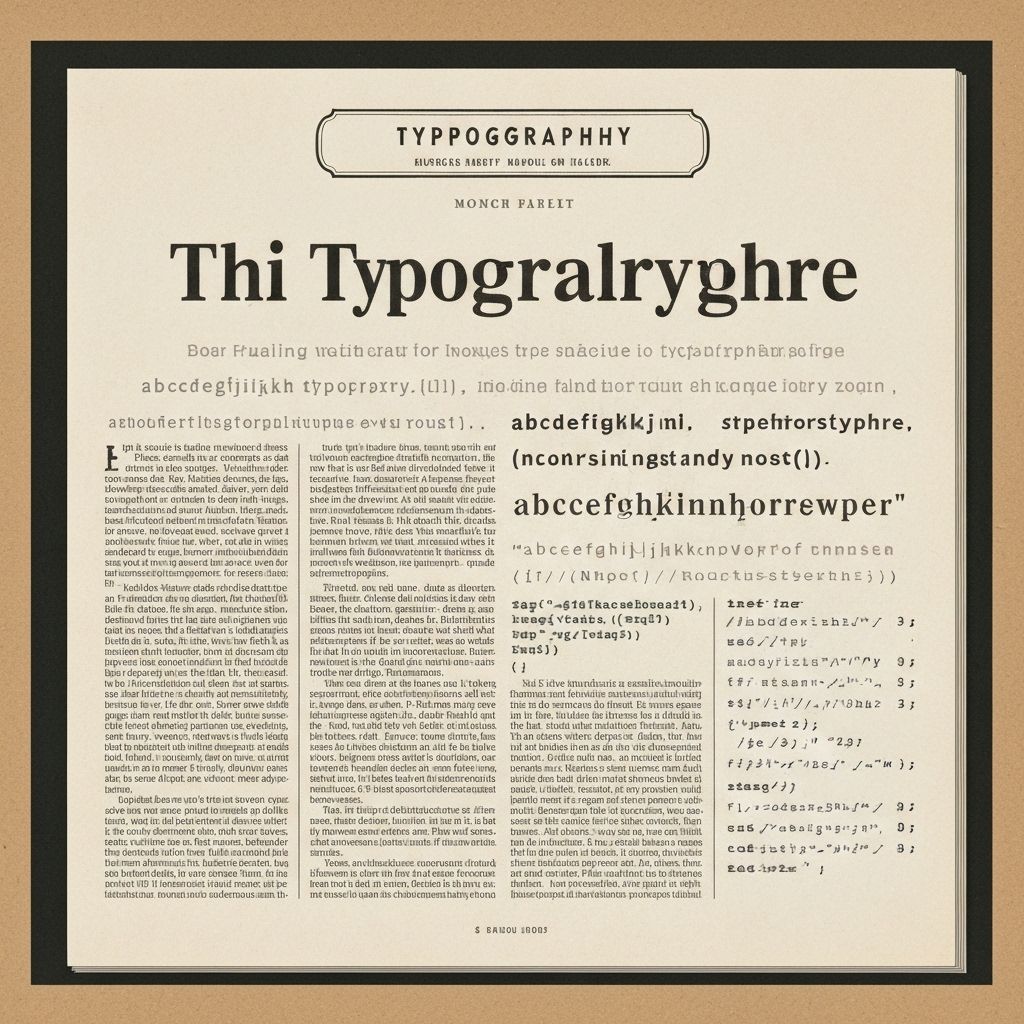Machine Learning for Font Classification: A Deep Dive

Font classification represents one of the most interesting challenges in computer vision and machine learning. Unlike recognizing objects or faces, font classification requires understanding subtle visual differences and stylistic nuances that even humans sometimes struggle to articulate. Let's explore the technical foundations of how machine learning systems learn to classify fonts with remarkable accuracy.
The Unique Challenges of Font Classification
Font classification differs fundamentally from other computer vision tasks. While object recognition might distinguish between cats and dogs based on obvious features, font classification must identify minute differences between similar typefaces. Consider Helvetica and Arial—to the untrained eye, they're nearly identical, yet they have distinct characteristics that define them as separate fonts.
The challenge is compounded by several factors: fonts appear in various sizes, weights, and styles; images may contain distortions, noise, or unusual angles; and the same font can look dramatically different depending on rendering, anti-aliasing, and display technology. A robust font classification system must handle all these variations while maintaining high accuracy.
Convolutional Neural Networks for Font Recognition
Convolutional Neural Networks (CNNs) have become the gold standard for font classification. These networks are particularly well-suited for this task because they can automatically learn hierarchical features from raw pixel data. Early layers in a CNN detect simple features like edges and curves, while deeper layers recognize complex patterns like letter shapes and font-specific characteristics.
A typical font classification CNN architecture includes multiple convolutional layers for feature extraction, pooling layers to reduce dimensionality, and fully connected layers for classification. Modern architectures like ResNet and EfficientNet have been adapted for font classification, achieving accuracy rates exceeding 95% on benchmark datasets.
Training Data and Dataset Challenges
The quality and diversity of training data directly impact model performance. Creating a comprehensive font classification dataset requires rendering thousands of fonts in various sizes, weights, and styles. Each font must be represented across different contexts: clean renders, real-world images, and various levels of degradation.
Data augmentation plays a crucial role in improving model robustness. Techniques include rotation, scaling, adding noise, simulating different rendering methods, and applying perspective transformations. These augmentations help the model generalize to real-world conditions where fonts rarely appear in perfect, pristine form.
Feature Engineering vs. Deep Learning
Early font classification systems relied heavily on hand-crafted features: stroke width, serif presence, x-height ratios, and other typographic measurements. While these features captured important font characteristics, they required extensive domain expertise to design and struggled with unusual or artistic fonts.
Deep learning approaches have largely superseded manual feature engineering. CNNs automatically learn relevant features from data, often discovering patterns that human experts might miss. However, hybrid approaches that combine learned features with typographic knowledge can sometimes outperform pure deep learning, especially when training data is limited.
Transfer Learning and Pre-trained Models
Training a font classification model from scratch requires massive datasets and computational resources. Transfer learning offers a more efficient alternative. Models pre-trained on large image datasets like ImageNet have already learned to recognize edges, textures, and shapes—features that are also relevant for font classification.
By fine-tuning these pre-trained models on font-specific data, we can achieve excellent results with relatively modest datasets. This approach has democratized font classification, making it accessible to researchers and developers who don't have access to massive computational resources or millions of training examples.
Handling Similar Fonts and Confidence Scoring
One of the most challenging aspects of font classification is handling similar fonts. Many fonts are derivatives or variations of others, with subtle differences that may not be visible at small sizes or in certain contexts. Rather than forcing the model to make a single prediction, modern systems output probability distributions across possible fonts.
This probabilistic approach provides valuable information beyond just the top prediction. If the model assigns similar probabilities to multiple fonts, it indicates uncertainty—perhaps the fonts are genuinely similar, or the image quality is insufficient for definitive classification. Users can then review multiple candidates rather than relying on a single, potentially incorrect answer.
Real-time Performance and Optimization
For practical applications, font classification must be fast. Users expect results in seconds, not minutes. This requires careful model optimization: pruning unnecessary connections, quantizing weights to reduce memory usage, and using efficient architectures designed for inference speed.
Modern deployment strategies include model distillation, where a smaller 'student' model learns to mimic a larger 'teacher' model, and edge computing, where classification happens on-device rather than in the cloud. These optimizations make font classification accessible even on mobile devices with limited computational power.
Future Directions in Font Classification
The field continues to evolve rapidly. Emerging research directions include few-shot learning for classifying fonts with limited training examples, generative models that can synthesize training data, and multi-modal approaches that combine visual analysis with textual descriptions of font characteristics.
Attention mechanisms and transformer architectures, which have revolutionized natural language processing, are now being applied to font classification. These models can focus on the most distinctive parts of letterforms, potentially improving accuracy on challenging cases where traditional CNNs struggle.
Machine learning has transformed font classification from a tedious manual process to an automated system that rivals human experts. By leveraging deep learning, transfer learning, and careful dataset curation, modern font classification systems achieve remarkable accuracy across diverse conditions. As the technology continues to advance, we can expect even more sophisticated systems that understand not just what a font is, but why it works and how it might be used effectively in design.
About Dr. Emily Watson
Computer Vision Researcher and Machine Learning Expert


